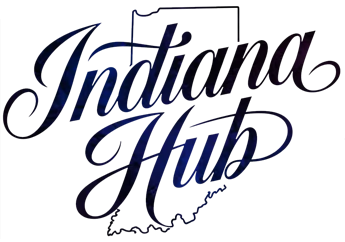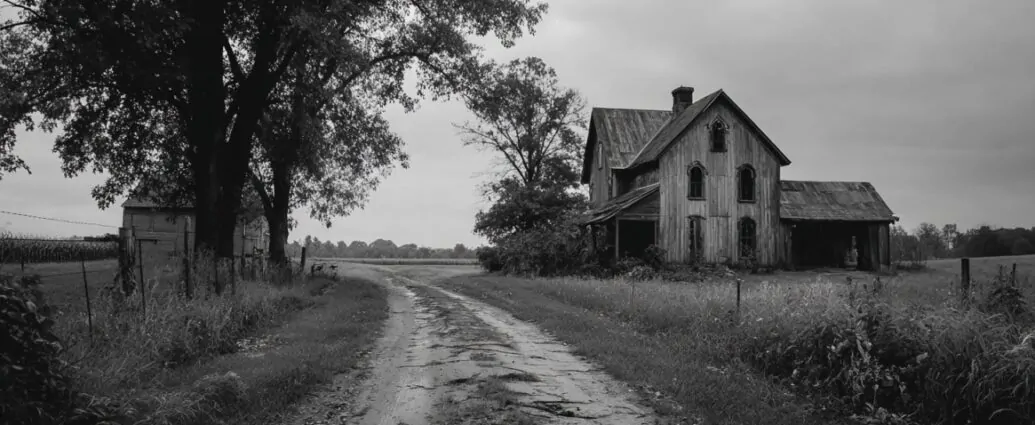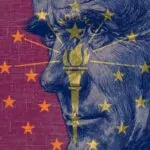Hoosier folklore spans Indiana, featuring tales of strange creatures and eerie encounters that have left a lasting impression on local communities. Legends handed down through generations, stories captured in university folklore archives, and firsthand accounts from residents paint a vivid picture of the state’s rich tapestry of the unknown.
Stories range from lake monsters to forest tricksters, shadowy figures haunting roads, and cryptids roaming secluded landscapes.
Each tale adds depth to the collective memory of Indiana, shaping a local folklore that continues to thrive and spark curiosity. The creatures of Hoosier folklore are not mere figments of imagination; they are characters that breathe life into community storytelling, reflecting fears, hopes, and a sense of wonder.
Before we go into the chilliness of folklore, you must understand the meaning behind Hoosier and what it means!
Indiana’s folklore archives reveal how these legends have evolved and persisted, revealing patterns of belief that bind communities through shared mystery and cultural tradition.
Whether in whispers of the Gullywompus in the woods, sightings of the giant turtle of Churubusco, or chilling accounts of strange lights and sounds, the tales remind locals that their state holds secrets beneath its fields, forests, and waters.
The Gullywompus of Camp Louis Ernst
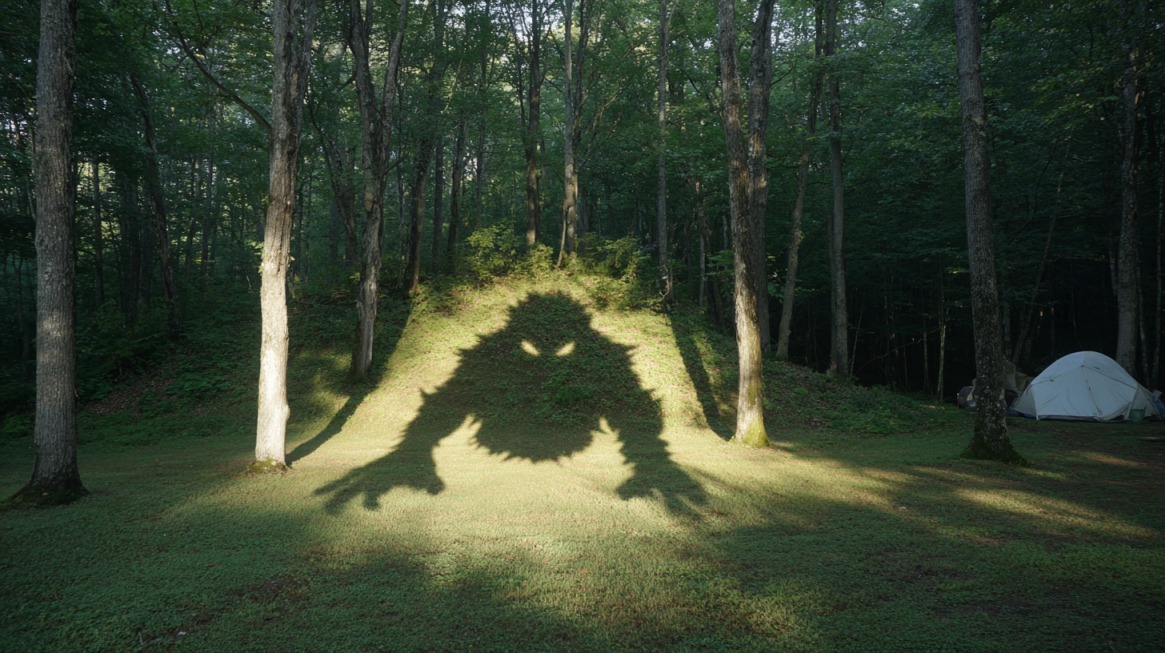
In DuPont, Indiana, scouts often terrified younger campers with tales of the Gullywompus, a creature said to lurk at the far edges of Camp Louis Ernst. Accounts from the 1960s and 70s describe the Gullywompus as a significant, hairy being with piercing red eyes that glowed menacingly in the dark.
Its deep, unsettling moan would echo through the woods, and it was believed to shake trees and grab at unsuspecting hikers who dared venture too far from the main camp.
The story served as a chilling rite of passage for new scouts, passed down from older campers who delighted in orchestrating frightening nighttime outings into the woods. The Gullywompus legend grew into a staple of the camp’s lore, reinforcing a sense of adventure and fear for generations of scouts who visited the camp each summer.
| Details | Information |
| Location | Camp Louis Ernst, DuPont |
| Description | Large, hairy creature with red eyes |
| Active Period | Moonlit winter nights |
| Reported Behavior | Tree shaking, loud moans, and grabbing hikers |
The Cable Line Monster
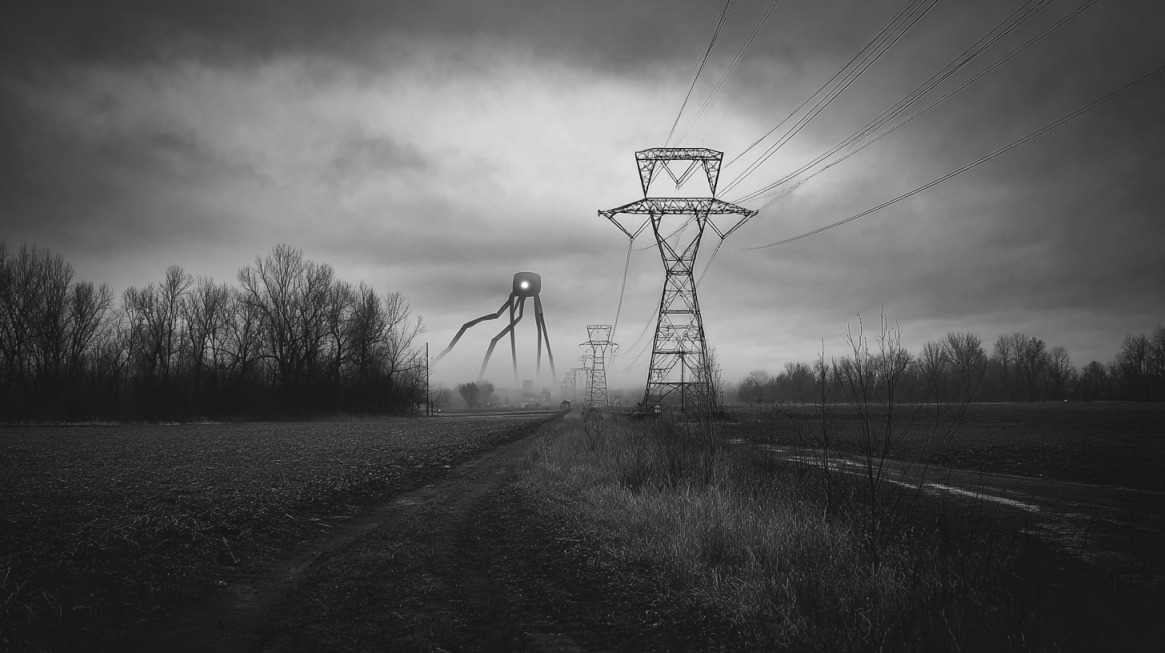
In Elkhart, Indiana, strange tales circulate about Cable Line Road, where locals report a tree that bears the eerie impression of a human face. The legend claims the face appeared after a fatal accident where a driver crashed into a tree while fleeing a monster.
Stories vary about the nature of the creature, with descriptions ranging from a swamp monster to a hairy, bear-like animal, and even a troll.
Residents claim that the monster continues to haunt the area, lurking near the tree and causing cars to shake and their headlights to flicker when passing by.
The Cable Line Monster has grown into one of the most well-known tales in local folklore, blending tragedy with mystery and making it a point of curiosity for those brave enough to explore the road at night.
The Pike County Monster
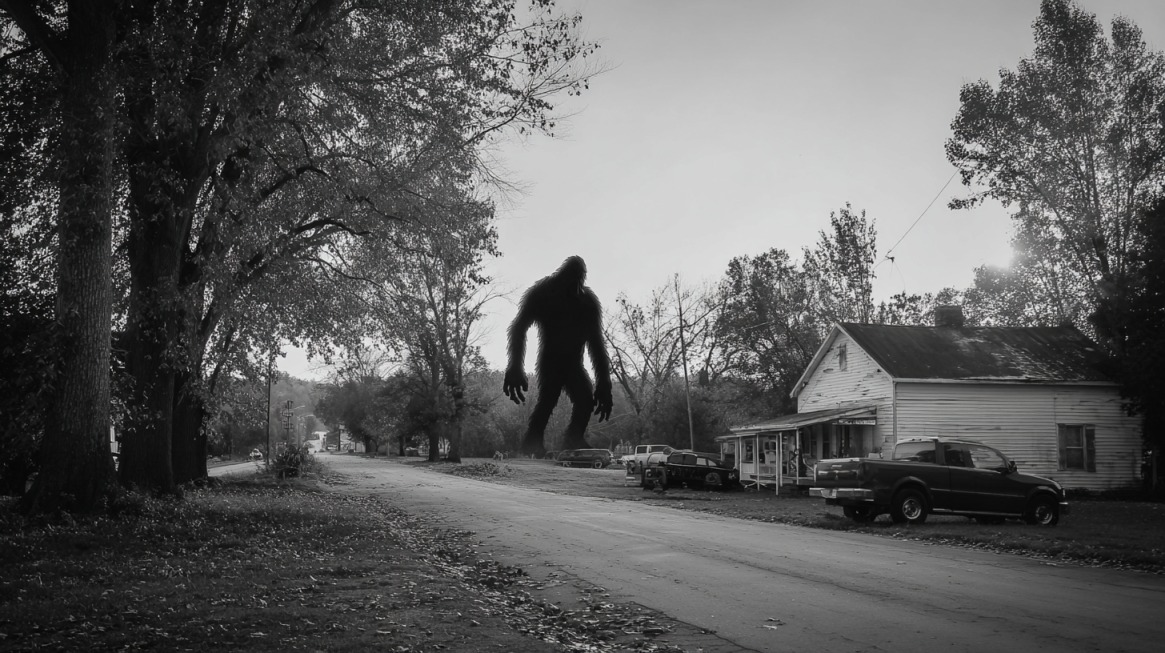
In Pike County, Indiana, stories persist of a half-man, half-ape creature that has fascinated locals for decades. Descriptions claim the creature stands a towering twelve feet tall, with massive footprints far larger than those of any human.
Sightings of the beast have been reported near old strip mining sites, where witnesses describe hearing a terrifying scream unlike any known animal.
Accounts detail how the creature appears only one day every four weeks during the late summer and early fall of every other year. Many locals believe the creature may be connected to broader legends, such as Bigfoot or Windigo, and some suggest it hibernates or roams the countryside in search of new areas to haunt.
Over time, this legend has become ingrained in the region’s folklore, keeping locals and visitors alike on edge with its mysterious presence and sporadic sightings.
The Beast of Busco
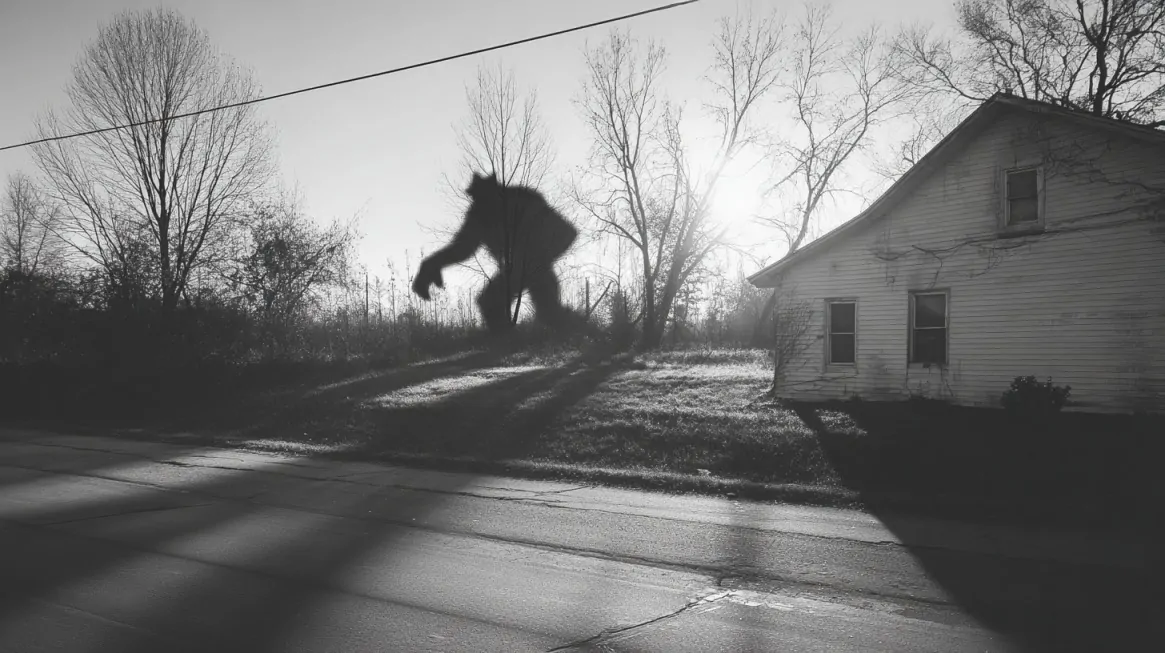
In 1949, the quiet town of Churubusco, Indiana, erupted into excitement when locals began sharing tales of a giant turtle named Oscar living in Fulk Pond. Witnesses described Oscar as a massive creature, with a shell as large as a car, gliding silently beneath the water’s surface. The spectacle drew curious onlookers from across the state, all hoping to catch a glimpse of the legendary turtle.
Attempts to capture Oscar included draining the pond and using a diving suit, but none of these efforts were successful. As time passed, Oscar’s legend only grew, transforming from a fleeting sighting into a symbol of local pride.
Today, the story is commemorated through Churubusco’s annual Turtle Days Festival, and Oscar remains a celebrated figure in the town’s folklore.
| Details | Information |
| Location | Churubusco |
| Creature | Giant snapping turtle |
| Sightings Start | 1949 |
| Local Event | Turtle Days Festival |
Lake Manitou Serpent
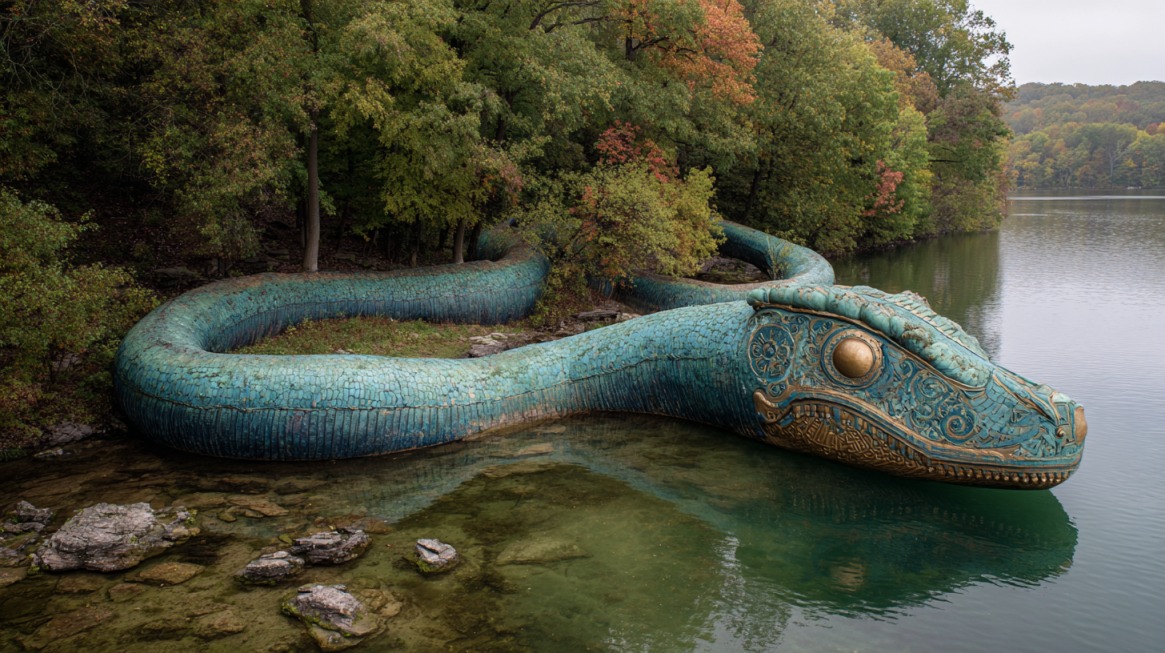
Lake Manitou near Rochester, Indiana, is steeped in legend with tales of a serpent called Meshekenabek, also known as the Devil’s Lake Monster. According to stories from the 1830s, witnesses described a creature measuring sixty feet in length, with a horse-like head and skin marked by large, yellow spots.
The Potawatomi, who once inhabited the area, named the lake “devil’s lake” and refused to fish, bathe, or canoe in its waters, believing an evil spirit resided beneath the surface. Over the years, the legend of the Devil’s Lake Monster has become ingrained in the region’s folklore, adding a layer of mystery to the otherwise tranquil lake.
Mill Race Monster
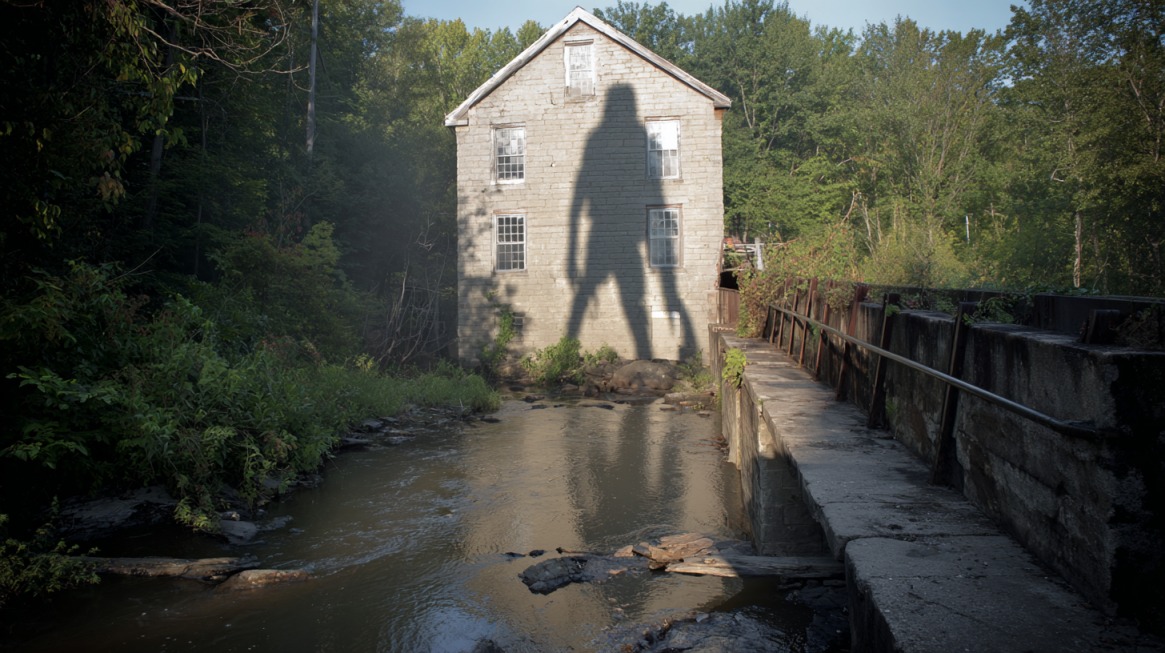
In 1971, the Mill Race Monster gripped Columbus, Indiana, with fear. Witnesses described the creature as a green, hairy beast that emitted a foul odor so strong it lingered in the air. One chilling report detailed the monster leaping onto a car hood, leaving deep claw marks as proof of the encounter.
The sighting sparked widespread alarm, drawing monster hunters and curious onlookers to Mill Race Park. Concerned for public safety, local authorities decided to close the park, hoping to prevent further panic and confrontations with the mysterious creature.
Pukwudgies of Mound State Park
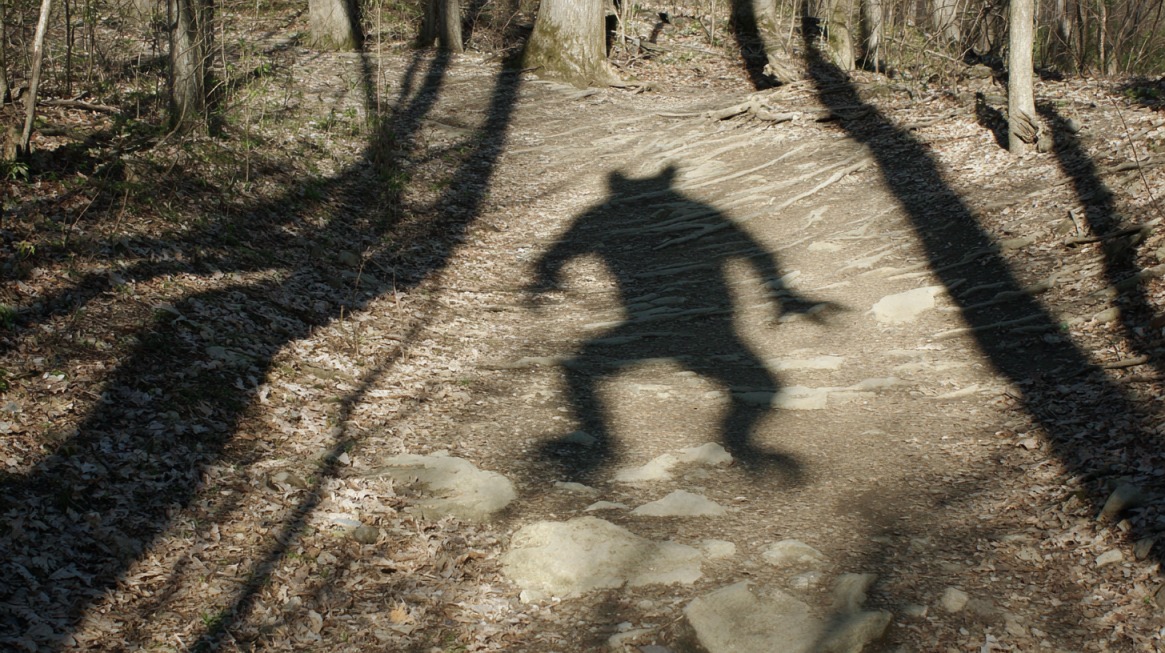
Pukwudgies are part of the folklore surrounding Mound State Park near Anderson, Indiana. These small, goblin-like creatures are said to stand no taller than three feet, with hair as pale as straw and voices that rise in high-pitched tones. Local stories portray them as playful tricksters, delighting in teasing humans with minor pranks.
Some accounts tell of children encountering groups of Pukwudgies while playing near the park’s ancient earthworks. The tales suggest that while generally harmless, the creatures prefer to keep their distance and observe from the shadows. The continued sharing of Pukwudgie stories adds a touch of whimsy and mystery to the folklore of Indiana.
More Hoosier Cryptids
Additional Hoosier folklore includes accounts of a giant catfish in the Wabash River near Terre Haute, said to inhabit the remains of an old train that sank beneath the water long ago. Near Petersburg, residents have reported sightings of strange, hulking creatures lurking in abandoned strip pits, characterized by glowing eyes and enormous footprints.
Around the Elkhart-Mishawaka border, stories tell of unidentified beings roaming the countryside. Tales persist of small, shadowy figures with red eyes glimpsed near cornfields, vanishing without a trace. These local legends recount unexplained disappearances and chilling encounters that continue to captivate the imaginations of Indiana residents.
@sacredcree Do you know these five creatures of native american folklore?! #nativetiktok #skinwalker #wendigo #scary ♬ original sound – Sacred Cree
| Location | Creature | Report |
| Wabash River, Terre Haute | Giant catfish | A 150-pound fish living in a sunken locomotive |
| Fredricksburg | Small humanoid creatures | Standing upright, reportedly menacing |
| Rochester | Lake Manitou Monster | Serpent with horse-like head |
| Columbus | Mill Race Monster | Green, hairy beast reported by locals |
Hoosier folklore continues to inspire tales of unknown creatures and unexplained events. Each region offers unique stories that reflect the history and imagination of Indiana’s residents. Some legends have faded, while others grow with each new report.
Summary Table
| Creature | Location | Key Description |
| Gullywompus | Camp Louis Ernst | Hairy, red eyes, tree-shaking monster |
| Cable Line Monster | Elkhart | Tree with face imprint, car disturbances |
| Pike County Monster | Petersburg | 12-foot figure, glowing eyes |
| Beast of Busco | Churubusco | A 500-pound turtle named Oscar |
| Lake Manitou Serpent | Rochester | 60-foot serpent with horse-like head |
| Mill Race Monster | Columbus | Green, slimy, hairy monster |
| Pukwudgies | Mound State Park | Small tricksters, blonde hair |
| Wabash River Catfish | Terre Haute | Giant fish in a sunken locomotive |
Hoosier folklore offers a glimpse into the strange and compelling stories that continue to weave through Indiana’s communities. Some residents claim to have had firsthand encounters with mysterious creatures, while others pass down chilling tales shared by earlier generations.
These legends of monsters, spirits, and cryptids form an integral part of Indiana’s cultural heritage, reinforcing a sense of wonder and fear that binds together local history and imagination. As long as stories of strange sightings and eerie sounds are shared, Hoosier folklore will continue to be a vibrant part of the state’s identity.
Urban Legends of Indianapolis
Indianapolis boasts its own diverse and deeply rooted collection of urban legends, many of which center around the city’s historic and iconic locations. Crown Hill Cemetery, one of the city’s most well-known landmarks, has been the backdrop for numerous ghost stories that have been passed down over generations.
Tales from Crown Hill include sightings of a distraught woman carrying a baby who wanders the grounds, reportedly unable to find her way out after getting trapped inside at closing time. There are also whispered stories about the Caleb Blood Smith mausoleum, a large Egyptian-style structure said to be haunted.
According to some versions of the legend, its blackened appearance is attributed to fires set long ago in an attempt to contain a spirit believed to be connected to the Lincoln assassination. However, there is no clear historical evidence to support this claim.
Another intriguing figure linked to Crown Hill is the Gypsy King, whose grave is said to be visited each night by family members, who leave a bottle of wine, only to return the next morning and find it empty, adding a layer of mystery and magic to the location.
Beyond Crown Hill, the city holds onto other chilling stories, such as the Ghostly Hitchhiker, a tale familiar in many American towns but with its own Indianapolis twist. In this version, a teenage girl dressed for the prom is seen standing on the roadside in the rain, accepts a ride home from a passerby, and mysteriously vanishes from the back seat before reaching her destination.
The driver later learns from the family at the given address that the girl had died on prom night years ago, solidifying the story’s place in Indianapolis folklore. These urban legends reflect the city’s unique character and its residents’ long-standing tradition of storytelling, blending history, tragedy, and a fascination with the unexplained.
Haunted Houses and Ghostly Tales
Indianapolis has long been a hub for stories of haunted houses and eerie encounters, with some of the most famous legends tied to specific locations that have stood for decades. One of the most enduring tales surrounds the Hannah House, a stately mansion on Madison Avenue, reputed to have served as a stop on the Underground Railroad.
Legend says that a tragic fire in the basement claimed the lives of enslaved people seeking freedom, and the spirits of these individuals are said to wander the halls still, restless and searching for the escape that was cruelly denied. Visitors and paranormal enthusiasts have reported unexplained footsteps, sudden cold spots, and faint whispers echoing through the building.
Another infamous site, the House of Blue Lights, once stood on the east side of the city and was known for the rumors surrounding its eccentric owner, Skiles Test. Stories claimed he preserved his deceased wife’s body in a glass coffin, bathed in eerie blue lights that gave the property its name.
Despite the demolition of the house in the 1970s, the legend of the House of Blue Lights persists, fueled by tales of strange blue glows and ghostly figures spotted in the area. Beyond these historic homes, other buildings in Indianapolis hold their own spectral stories.
The Indiana Repertory Theatre has long been rumored to be haunted by the spirit of former director Tom Haas, who tragically died in an accident and is said to appear jogging around the mezzanine on cold, rainy days.
The Indianapolis Athletic Club, after suffering a deadly fire in its ballroom in 1992, has been the site of numerous reports of ghostly activity, including sightings of a young man’s spirit attempting to warn others of impending danger. These tales, whether based in fact or fueled by imagination, reflect the city’s fascination with the supernatural and its desire to keep its ghostly stories alive through generations.
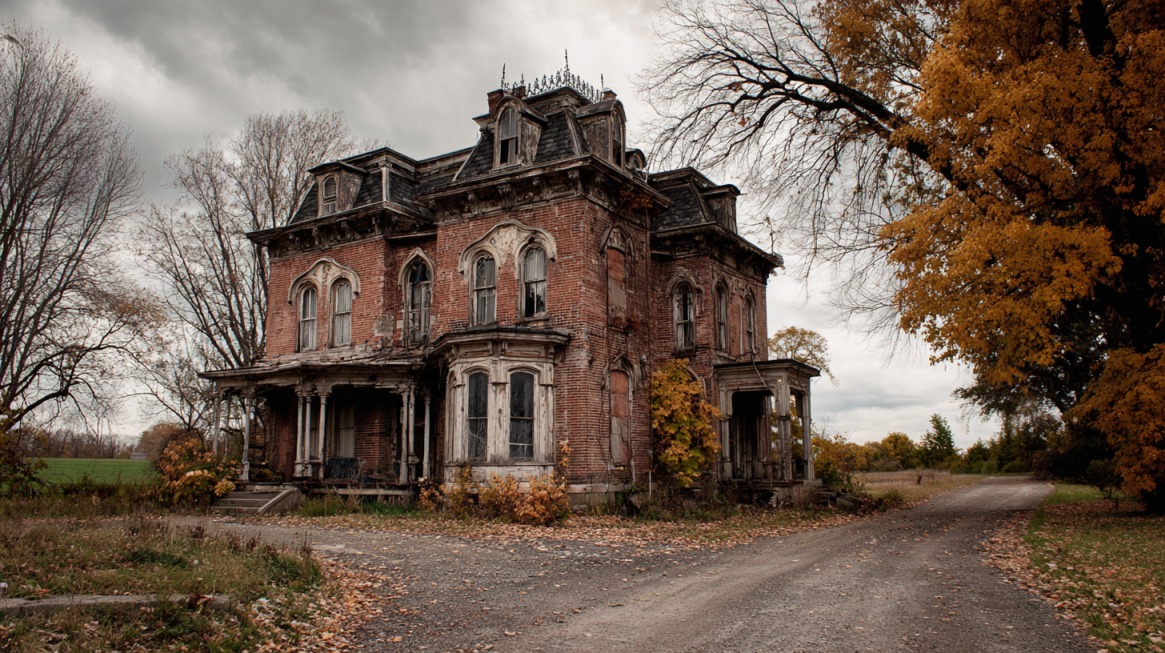
Legends of the Indianapolis 500
Legends surrounding the Indianapolis 500 exemplify how folklore can intertwine with significant cultural and sporting events, adding a layer of intrigue and superstition to the city’s most iconic race. One well-known tale is that of the Good Luck Rabbit, a mysterious rabbit said to appear on the track just as the race is about to begin, seen as a sign of good fortune for drivers.
Although the rabbit’s appearances are rare and fleeting, the story persists among race fans and participants, feeding the collective belief that such sightings signal a successful race ahead.
Beyond the rabbit, the Indianapolis 500 has given rise to stories of bizarre mishaps and playful pranks that have become part of its lore. Narratives tell of unexpected incidents, such as a motorist who inadvertently found themselves caught in a mob and pulled into the infield, only to later recount their surprise at being surrounded by roaring engines and cheering crowds.
Another tale recounts a 500 Festival Princess who posed nude in a Gasoline Alley garage, a story that has been whispered about for decades without confirmation but remains a staple of race-week gossip.
These accounts illustrate how even a world-renowned event like the Indianapolis 500 can become a rich ground for folklore, where the boundary between fact and fiction blurs under the excitement of race day. Whether it is a rabbit crossing the track or a festival princess caught in a scandal, these stories continue to spark conversation and contribute to the colorful mythology that surrounds the race each year.
Final Thoughts
The enduring power of Hoosier folklore underscores the profound connection between storytelling and Indiana’s identity, as well as its profound connection to the land around them. The state’s mix of dense forests, winding rivers, deep lakes, and rolling fields creates a backdrop where stories naturally take root and thrive.
Tales of creatures like the Gullywompus, lurking in the shadows of summer camps, or Oscar the massive turtle, captivating entire communities in Churubusco, serve as reminders that wonder and fear often coexist in local memory.
The haunting accounts of the Mill Race Monster in Columbus show how a single sighting can spark generations of retellings, transforming a brief moment into a legend that shapes how a place is perceived. Indiana’s folklore is not just about the monsters, spirits, or unexplained events themselves; it’s about how these stories are told and passed down.
Each retelling adds a new layer, making the tales grow and adapt to the times. Yet always holding onto their core mystery. Whether whispered around campfires, shared in family circles, or discussed in public spaces, Hoosier folklore is a living tradition.
It continues to bind communities, ignite curiosity, and reinforce the idea that Indiana’s past and present are woven with tales that hint at more than what is immediately visible.
